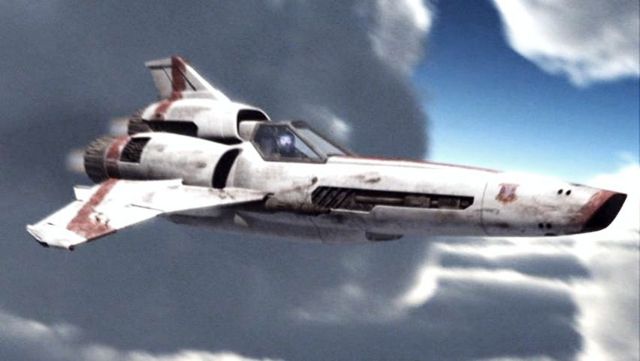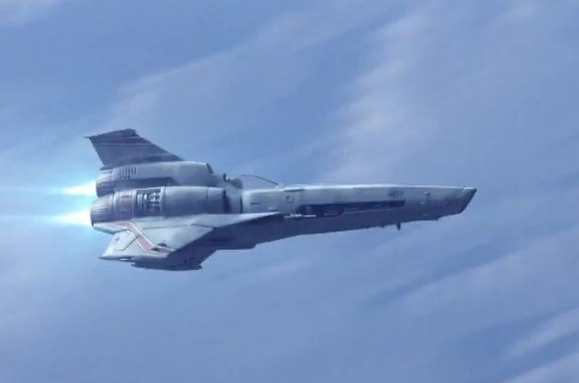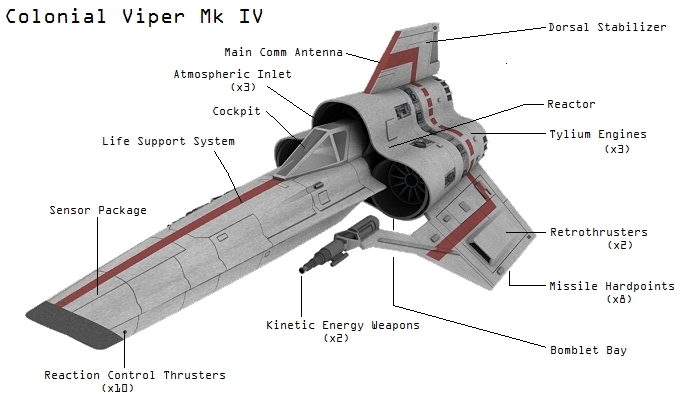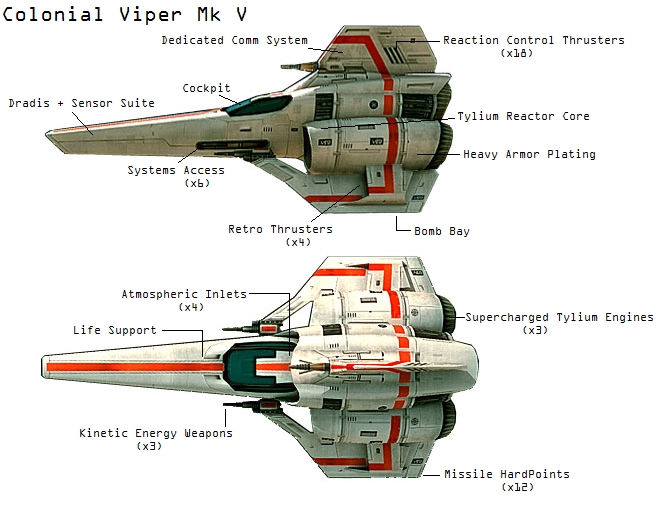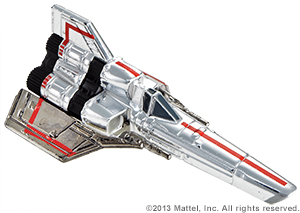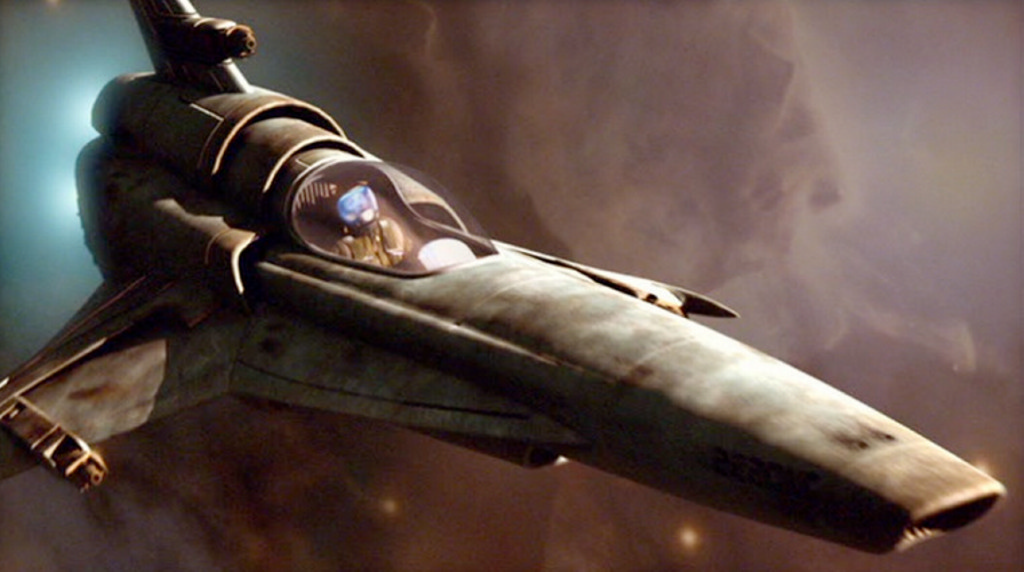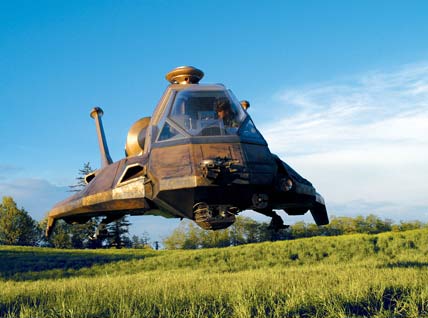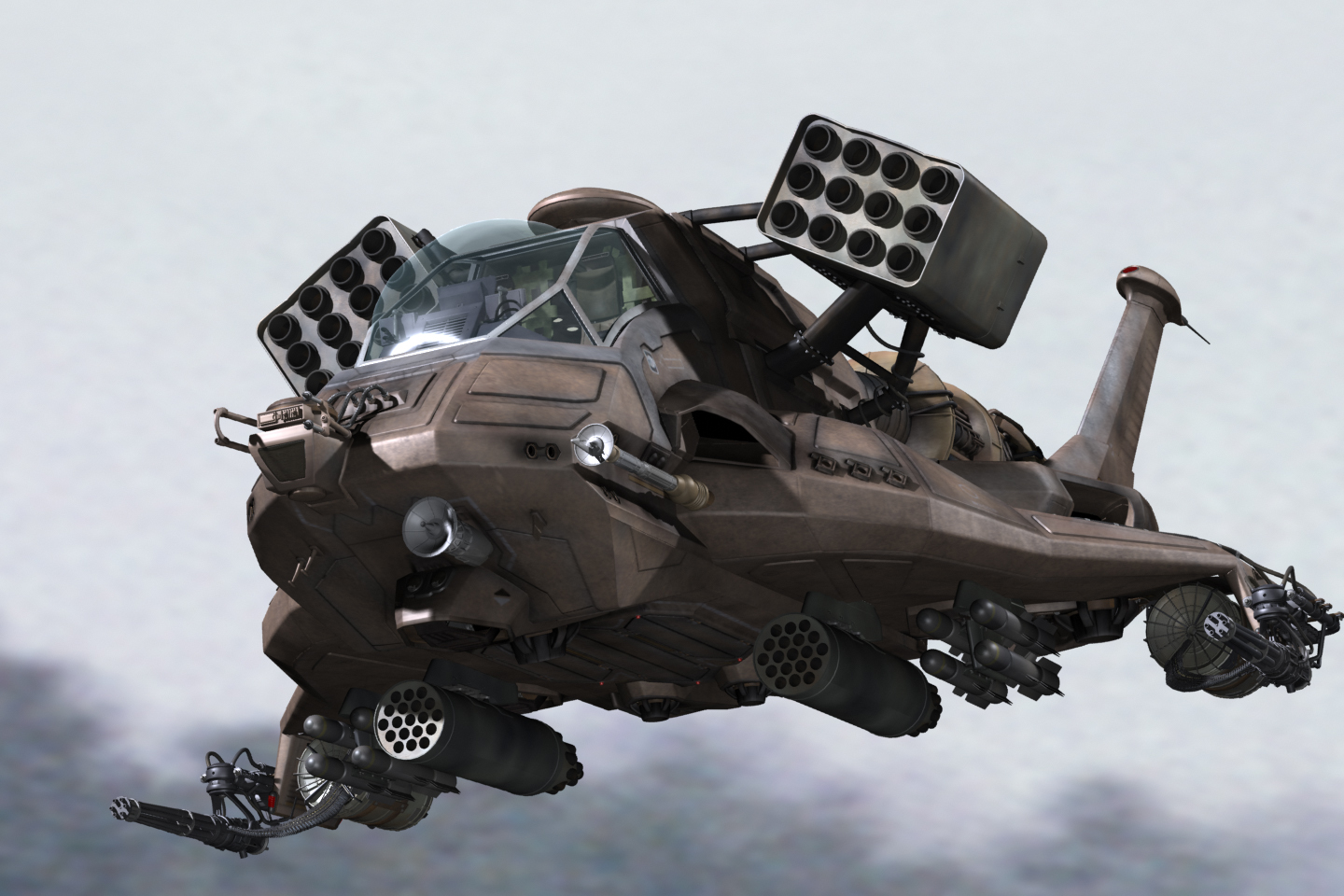Battlestar Excalibur:lentskarit
Sisällysluettelo
Viper Mark I
The Colonial Viper was the primary space superiority fighter and attack craft deployed by the Colonial military. Capable of both atmospheric and long-range spacial flight, the Viper is a single-pilot craft with two-forward mounted guns as standard.
Mark I can not carry missiles.
This model is completely retired from service.
Viper mark II
FTL No
Propulsion: 1 x Voram VM2-D15 upper turbo-thrust engine, 2x Voram VM3-D22 turbo-thrust engines, 2x reverse thrust motors, RCS points.
Crew: 1 pilot
Role: Space superiority fighter
Main Weapons: 2 x MEC-A6 "Fang" 30mm Thraxon forward-firing kinetic energy weapons (KEW) mounted in the wing roots with 800 round magazine
Optional Armaments: Dorsal pod for 8 x HD-70 Lightning Javelin missiles and/or up to 2x50 megaton nuclear warhead.
Status: Decommissioned
Length: 8.4m
Height: 2.7m
Wingspan: 4.7m
Although designed over 40 years ago, the Viper Mark II remains an outstanding interceptor and space superiority fighter that's proved more than capable of matching the Cylon raider in speed, agility and firepower.
Viper mark III
Successor of the Viper Mark II and a precursor to fighters used by the Fleet following the war, including the Viper Mark VII.
Masterpiece of engineering to some, unnecessarily complicated to others. The Mk III has six engines instead of three. The thought is that several engines could be knocked out before the Mk III was rendered worthless, also at least in theory, smaller engines are more efficient.
As with the Mark II kinetic weapons are used.
Missile armament is the same, but can fire two missiles at once. Mark III can not carry nukes.
A marked return to the Mk I chassis (due to post-war cutbacks) allowed Mk IIIs to be produced rather cheaply. Unfortunately the final product is deemed a failure by many, as its engine system is cluttered with thrust transfer vents and it boasts a nightmarish computerized engine control system.
Viper Mark IV
The Mk IV is a revolutionary design. It is designed from the ground up to be a hybrid space/atmospheric versatility fighter. It has three engines and two KEWs.
As a hybrid fighter/ground support Mark IV carries no missiles but can carry a reasonable bomb load.
The biggest change is a force induction hood that surrounds the cockpit letting air straight into the engines. This Viper is much more efficient in atmosphere burning only a quarter of the Tylium fuel needed to do the same run in a Mk II.
Viper Mark V
The Mk V "Scorpion" is the heaviest, most dangerous Viper to date.
Designed and first produced in Scorpia.
Mark V is armed with 6 wing mounted KEWs, 24 missiles and a heavy bomb load (including up to 2x50 megaton nuclear bombs)
The problem is that while powerful and with heavy armor Mark V is rather massive leading to maneuverability problems.
Due to its mass its first battles were disasters, in atmo Mk IVs could fly circles around the Mk V’s.
Worse it literally “fell out of the sky” when not flown by an expert pilot in atmo. In space the turn radius was larger than those of early Raptors making them durable yet easy kills.
Eventually Scorpia Arms increased the wing surfaces and added heavier reaction control thrusters improving over some of the problems. However, the upgrade cost is steep and few Mk 5's were ever upgraded.
Viper Mark VI
Mark VI is more accurately a prototype of Mk VII. Few were ever produced.
Mark VI is tremendously fast dedicated space superiority fighter with light arms and armor. It carries two KEWs and two missiles.
Viper mark VII
The Epaphus Fleet Systems Viper MkVII is a Colonial multirole aerospace fighter, originally developed by Kobol Military Industries.
Designed as a replacement for aging Viper designs, the Mark VII is a versatile craft which can carry most forms of Colonial ordinance. The Mark VII's sophisticated fly-by-wire and computer-managed systems push the envelope of fighter maneuverability.
The Mark VII is the most successful Colonial fighter program, with over 4,000 craft produced. The pinnacle of current fighter design, the Mark VII will proudly serve the Colonial Fleet for decades to come.
Mark VII is slightly larger than earlier Viper models (9.9m) and more heavily armoured.
Mark VII carries two missile launchers with capacity of 10 HD-70 Lightning Javelin missiles each and can be fitted with HD-51 Arbalest, AGM-41 Whiplash, MRT-N 2.3 Mangonel, TGB-102 Petardo or TM-7 Pyro Javelin missiles.
Raptor
Type Civilian / Military
FTL Yes (short range)
Crew 2 (Pilot and ECO)
Capacity 8 passengers
Role Reconnaissance and surveillance; Battlefield logistics; SaR; Transport
Weapons Normally unarmed; Mission specific ship to ship missiles; electronic countermeasures
Status Active
Engines 2x fixed sublight engines mounted aft, 1x small-scale FTL system, RCS points
Length 8.6
Height 2.9m
Weight 50 tons
Wingspan 5.6m
The Raptor is usually operated by a crew of two (one pilot and one ECO), has synthetic gravity on board, and is controlled by means of a fly-by-wire system (Rapture). It is capable of atmospheric flight and is also equipped with a short-range FTL engine, allowing it to make short faster-than-light hops.
Due to its size and shape, a Raptor is not launched from a battlestar's launch tube, rather, it deploys from the forward end of a flight pod. The vehicle has been a mainstay of the Colonial fleet for over 40 years, having entered service sometime prior to the twelfth year of the first Cylon War.
Its versatility and reliability in various roles has likely prevented it from being phased out by newer Colonial craft.
Raptors is designed to Undertake short and medium-range scans to detect electromagnetic, heat or other signatures from other vessels, scan planetary surfaces for signs of life, energy output, or to locate and assess mineral deposits, scout ahead of its parent warship in other planetary or celestial systems for any signs of hostile intent or stellar conditions prior to the parent ship's arrival and undertake search & rescue operations after an engagement with Cylon forces.
Raptor's extensive ECM capabilities enable jamming wireless or relay transmissions (by wireless or optically) from other spacecraft, scramble control signals used by guided weapons and handle IFF operations for Viper squadrons.
In addition to reconnaissance and scouting, the Raptor is also regularly used as airborne warning & control and electronic countermeasures platform supporting Viper operations, Marine assault craft, Ambulance / evac vehicle, General purpose transport, Combat Search and Rescue and to secure communication with other vessels.
The Raptor is designed for atmospheric as well as space-based operations. However, a critical element for atmospheric operations is that to remain airborne requires fuel: once in an atmosphere, the engines must be run constantly to maintain lift and to hover. Depending on the composition of the atmosphere itself, this can place severe strain on the Raptor's engines.
Due to their overall configuration and bulk, Raptors may also suffer from poor handling at low speeds, and rely heavily on directed thrust to remain airborne.
The Raptor is to be able to make 20 short FTL jumps before refueling.
The main flight deck / cabin of a Raptor is fully pressurized. However, crews operate in flight suits and helmets to help protect them against any hull breach. The cabin can also be depressurized and used in space rescue operations. Re-pressurization takes 10 seconds. The forward pilot and co-pilot seats can eject in an emergency as the forward canopy is blown away prior to the ejection.
The Raptor's contours provide it a reduced DRADIS signature to avoid detection. In addition, the craft carry an assortment of pods to aid in communications or defense as well as electronic countermeasures such as a jigger.
Raptor's four wing hardpoints and two fuselage hardpoints carry defensive pods each of which can carry 6 decoy drones, 6 Jigger sets,
4 communication drones, 4 sets of flares or 4 chaff pods.
The Raptor is an angular vehicle built for function, not aesthetics. The forward section consists of a flight cabin with side-by-side seats for the pilot and ECO, with a large bubble canopy providing wide fields of view both forward and side. The flight cabin opens into the main compartment where a workstation containing early warning, electronic countermeasures, and other equipment is manned by the ECO when not co-piloting the craft.
Access to the Raptor's main compartment is primarily through a large port-side hydraulic door, and a floor-mounted hatchway provides access through the deck. A pressurized docking skirt can also be extended from the underside, enabling the Raptor to dock to the hulls of other vessels. In assault missions, marines can use this skirt to breech a hull and board a hostile vessel.
Aft of the pressurized area are the FTL drive and main sublight engines. Port and starboard stub wings provide additional lift during atmospheric flight, and winglets reduce drag and provide step access to the wings and hull. RCS thrusters are placed throughout the craft for landing, maneuvering and stabilization.
Assault Raptor
Assault Raptors are heavily armed and armoured, yet they still make for a poor general-purpose fighter.
Many (often all) hardpoints of the standard Raptor are converted to carry weapons on this model and two wingtip hardpoints for KEWs is added.
Assault Raptor hardpoints can be armed with nuclear missiles, bombs/munitions pods, quad racks of missiles or multiple-tube rocket batteries mounted on the fuselage points.
